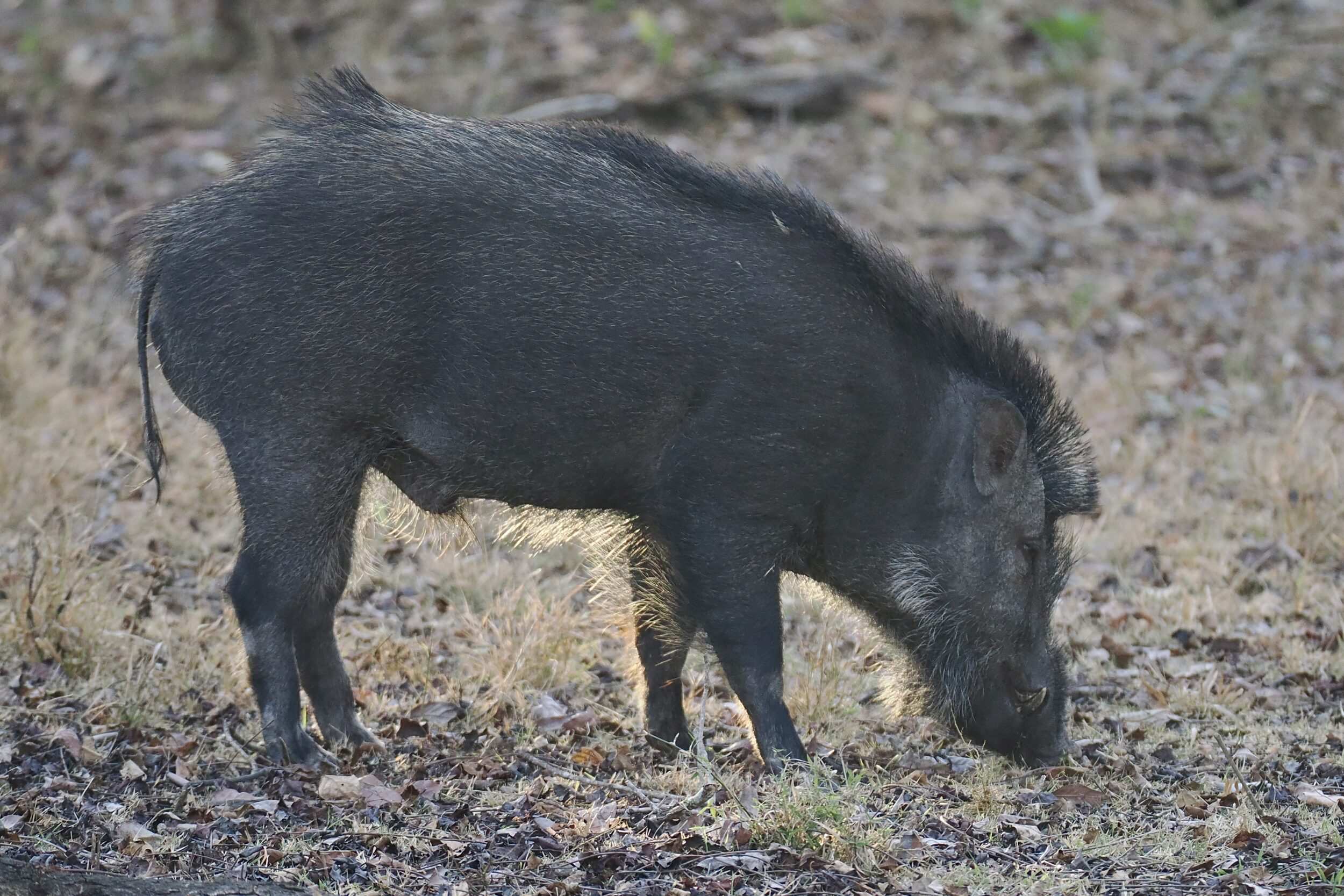All “true” wild boars – as distinct from domesticated pigs who have escaped and become “wild”/“feral” – hail from Eurasia or North Africa, the so-called “Old” World.
They are generally reckoned a single species, Sus scrofa.
Circa sixteen subspecies are recognised, and none are more striking than Sus scrofa cristatus, the Indian boar. (aka “Andamanese pig” or “Moupin pig”)
Its signature feature is a dorsal mane/crest that can be very spectacular, especially when it is a mature male’s, in erect mode.
The featured image’s hero was photographed early in the morning of 04 March 2023 in Karnataka, south India.
All photos in this post are copyright Doug Spencer, and they all were taken in Nagarhole Tiger Reserve, not far from Mysore.
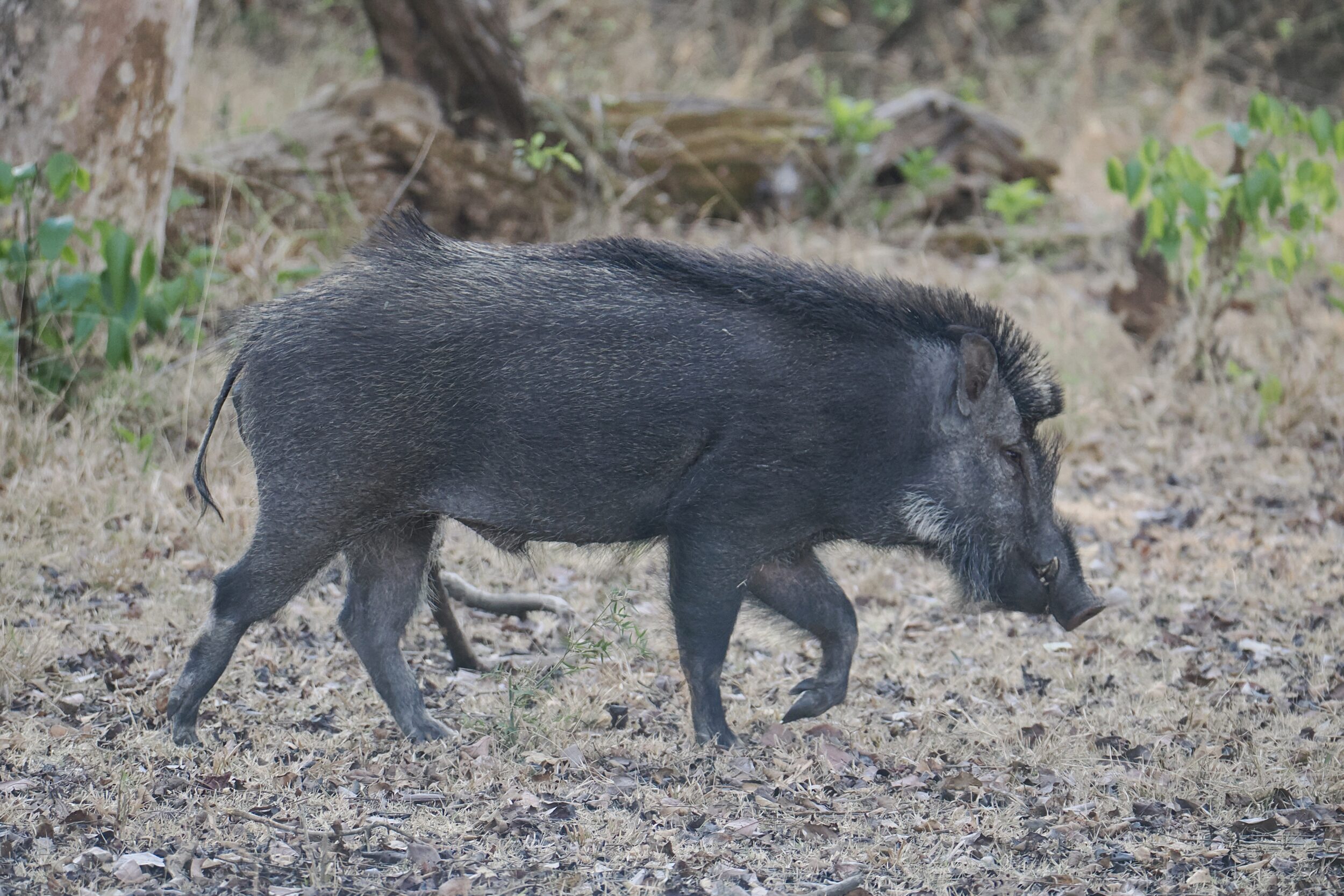
Click this to see a previously published photo of a male whose crest is fully erect.
Indian boars are found in several south Asian nations, but the subcontinent accounts for most of their population.
They thrive in a highly diverse range of habitats.
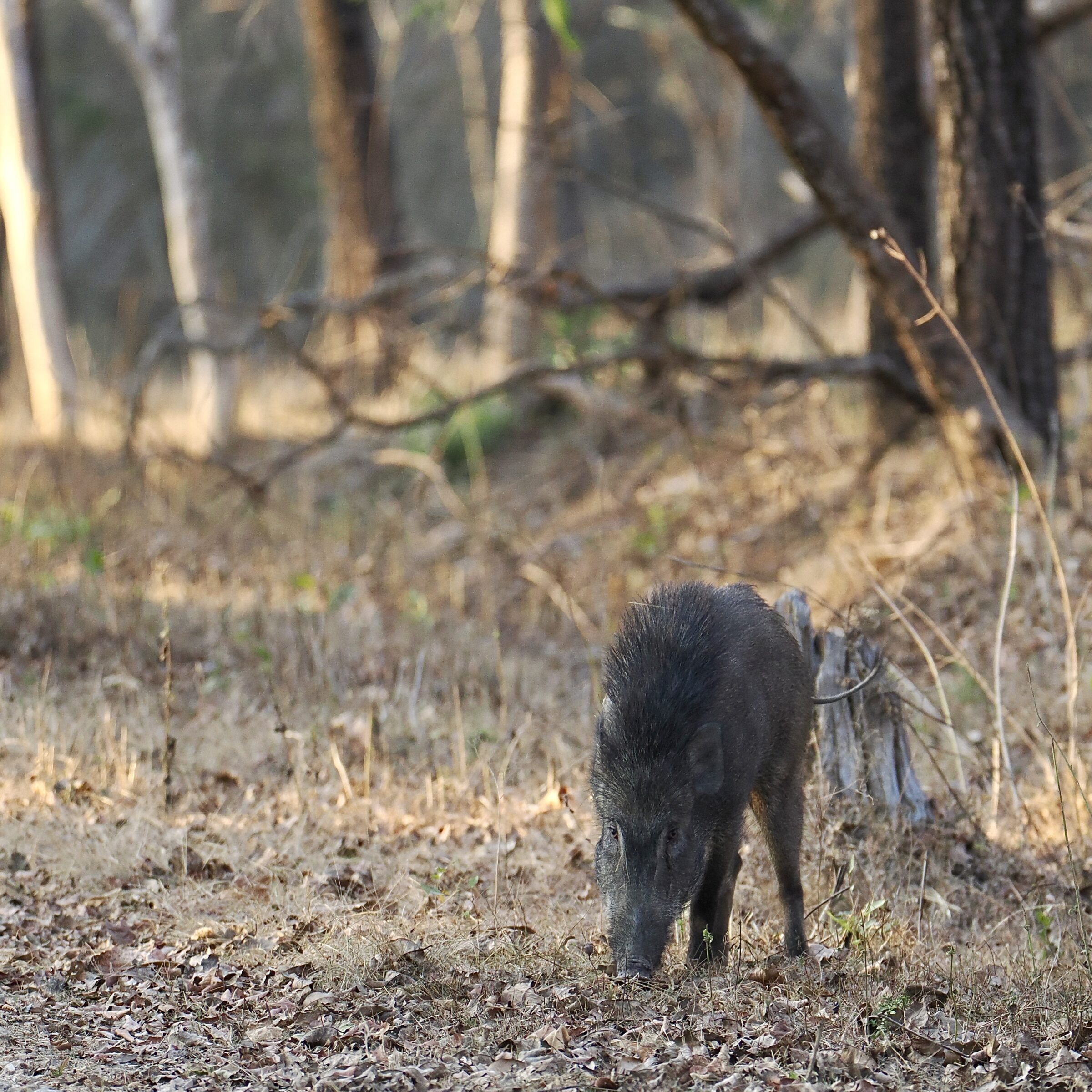
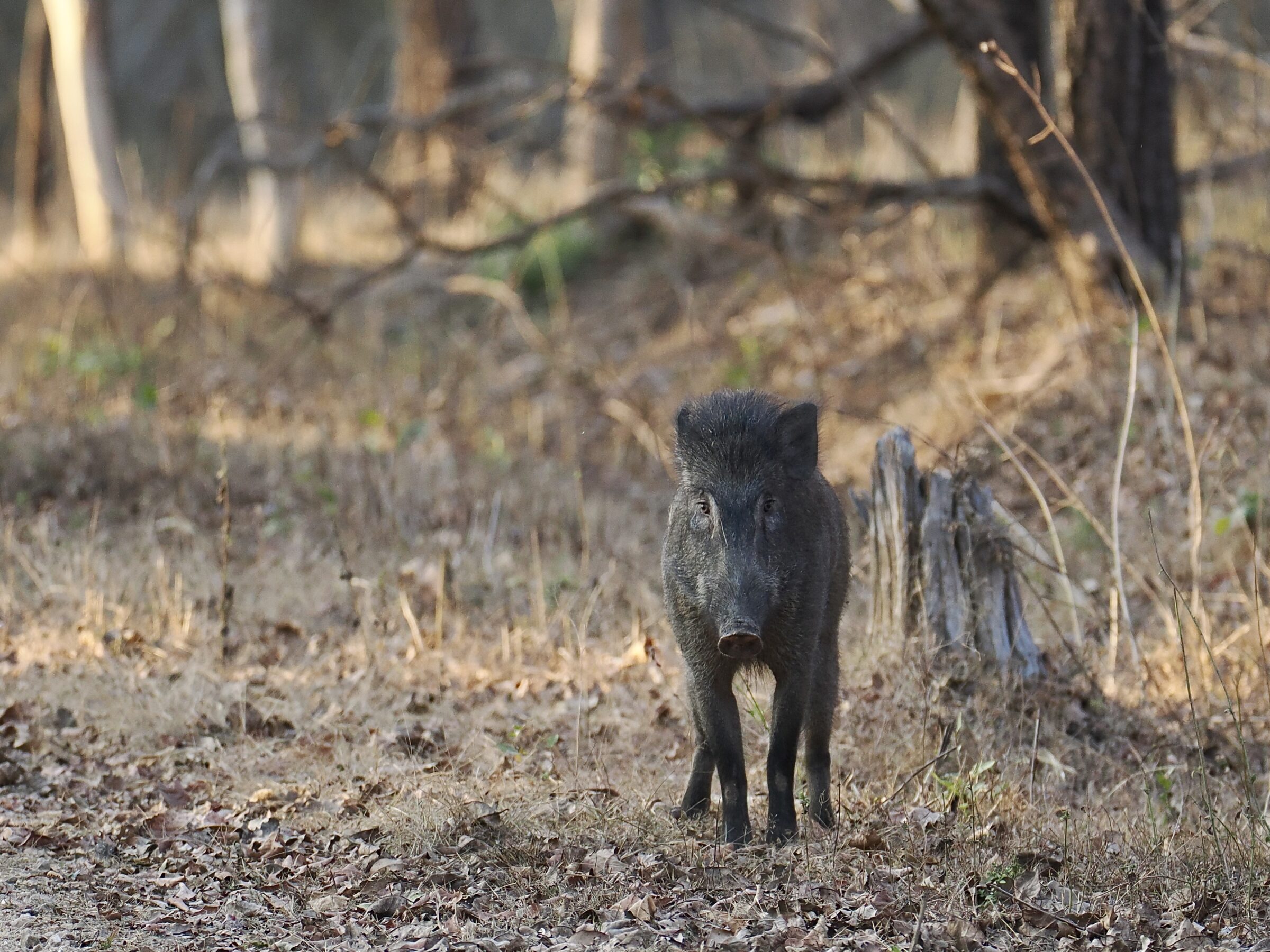
Both of the above images show the same individual.
Colouration, physique and hair density vary considerably, from one individual to another.
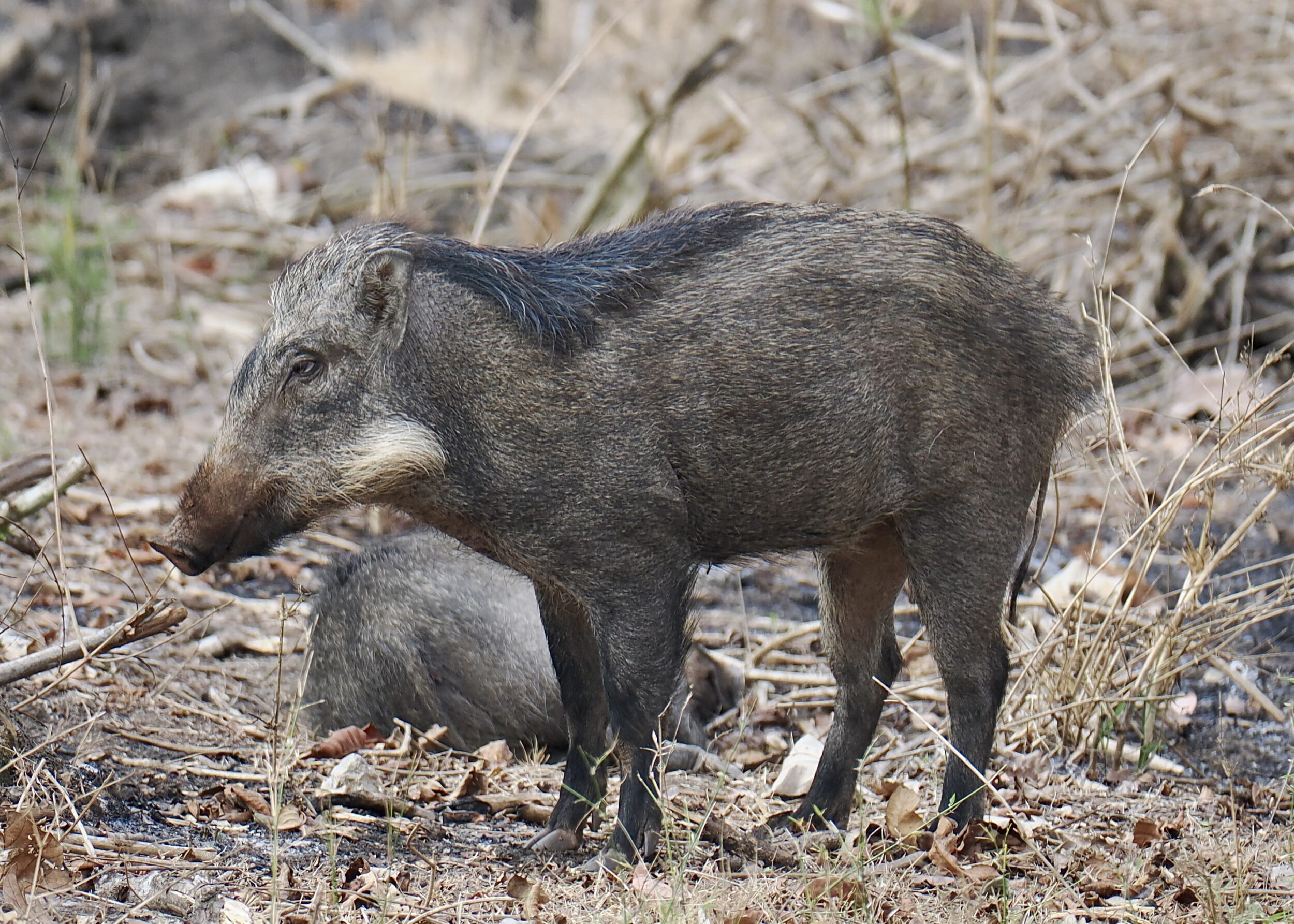
Adult male Indian boars lead a mostly solitary life.
Females, piglets and younger pigs of either gender are highly sociable, and usually get around in groups, known as sounders.
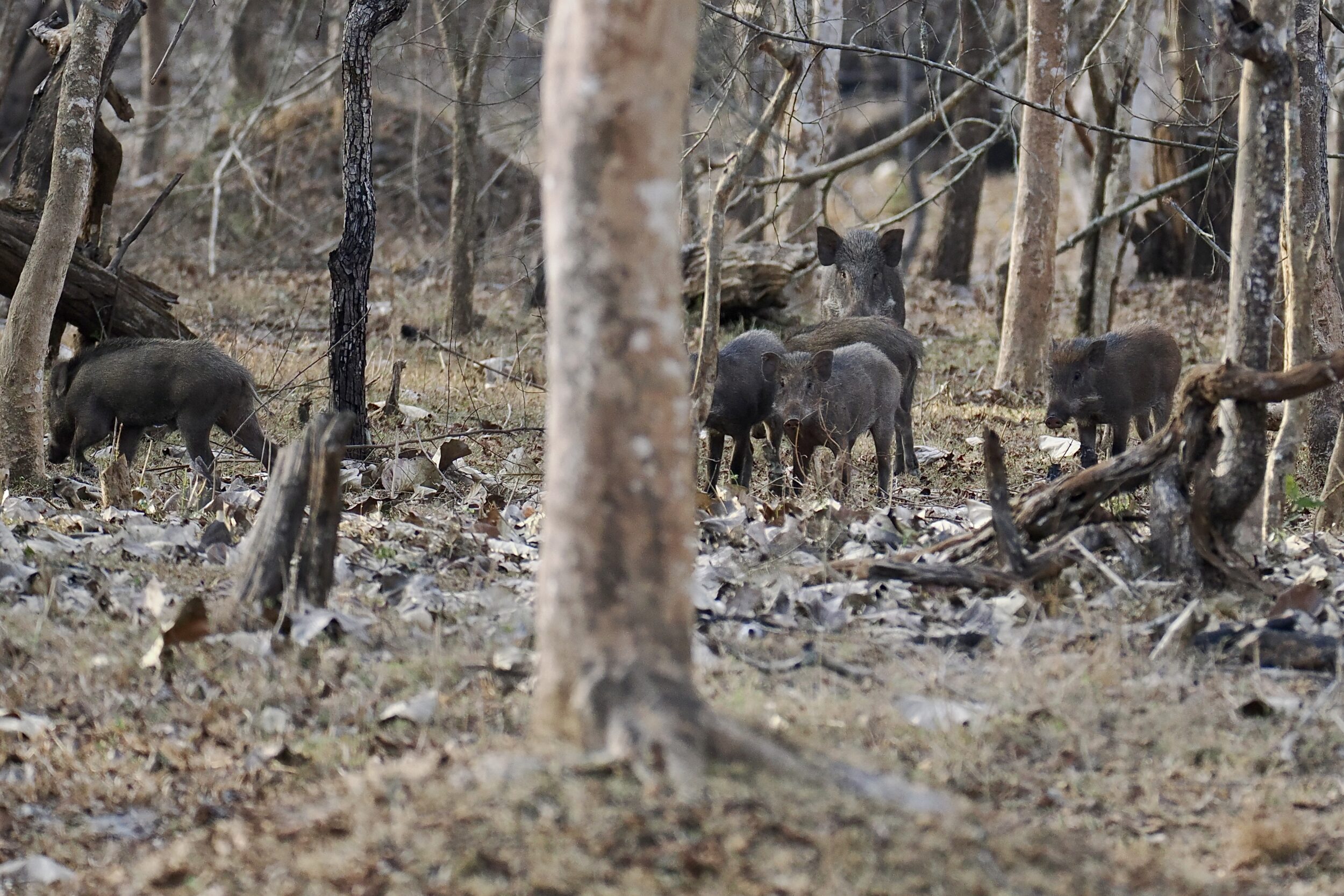
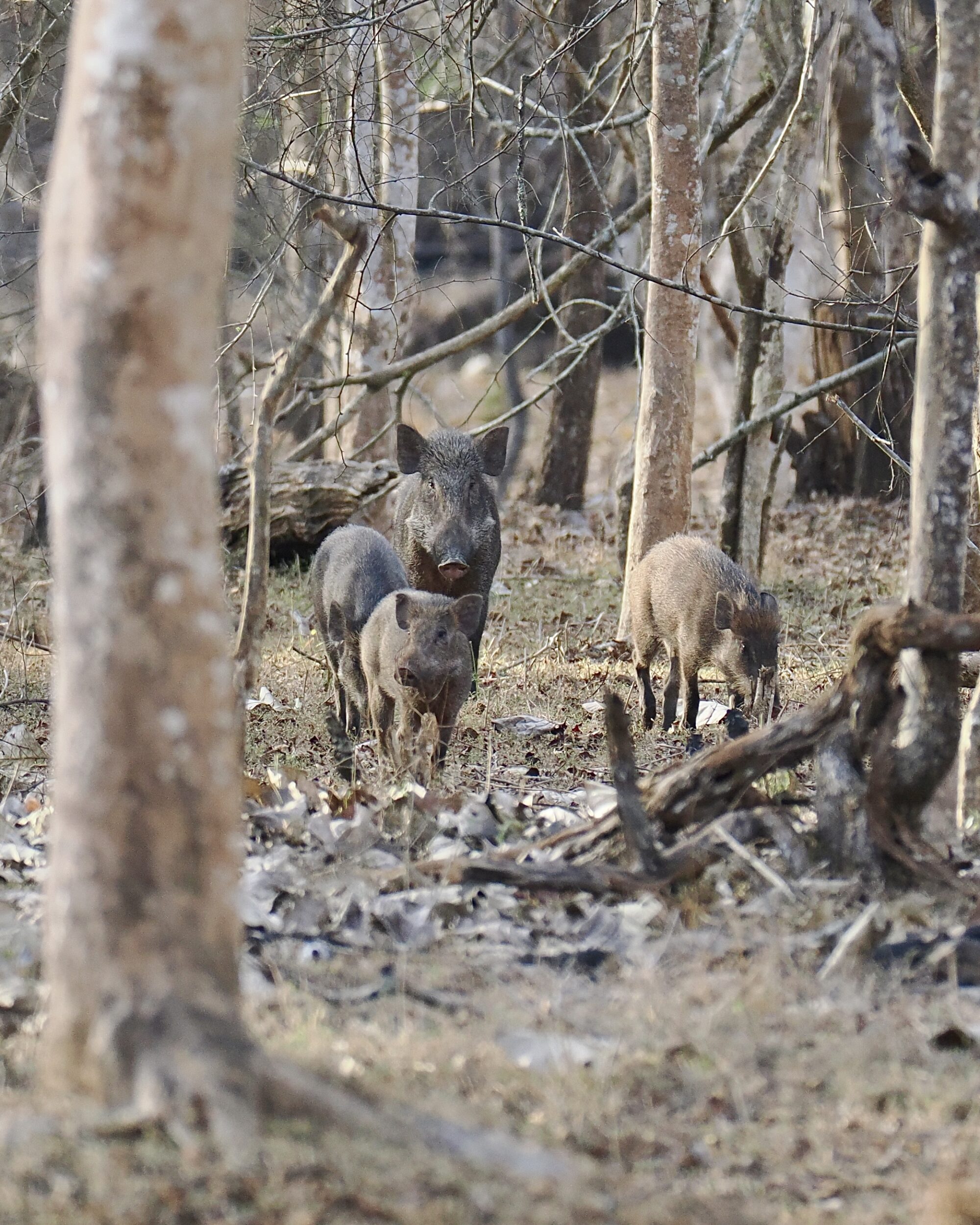
Indian boars are omnivorous, but only occasionally predatory.
As is true of other wild boars, they are intelligent, highly adaptable, and capable of damaging both “natural” and “cultivated” environments.
In a “balanced” ecosystem – one in which boars’ predators are present – Indian boars do a deal of “good work” as seed-spreaders and recyclers.
An adult male is capable of killing a leopard or tiger, so India’s big cats are more inclined to tackle sows, piglets and juveniles; individual leopards and tigers have been known to make their carnivorous way, progressively, through an entire sounder.
Like warthogs, Indian boars’ preferred method of dealing with predators is to outrun them.
These pigs can really motor along; sometimes they very nearly do fly!
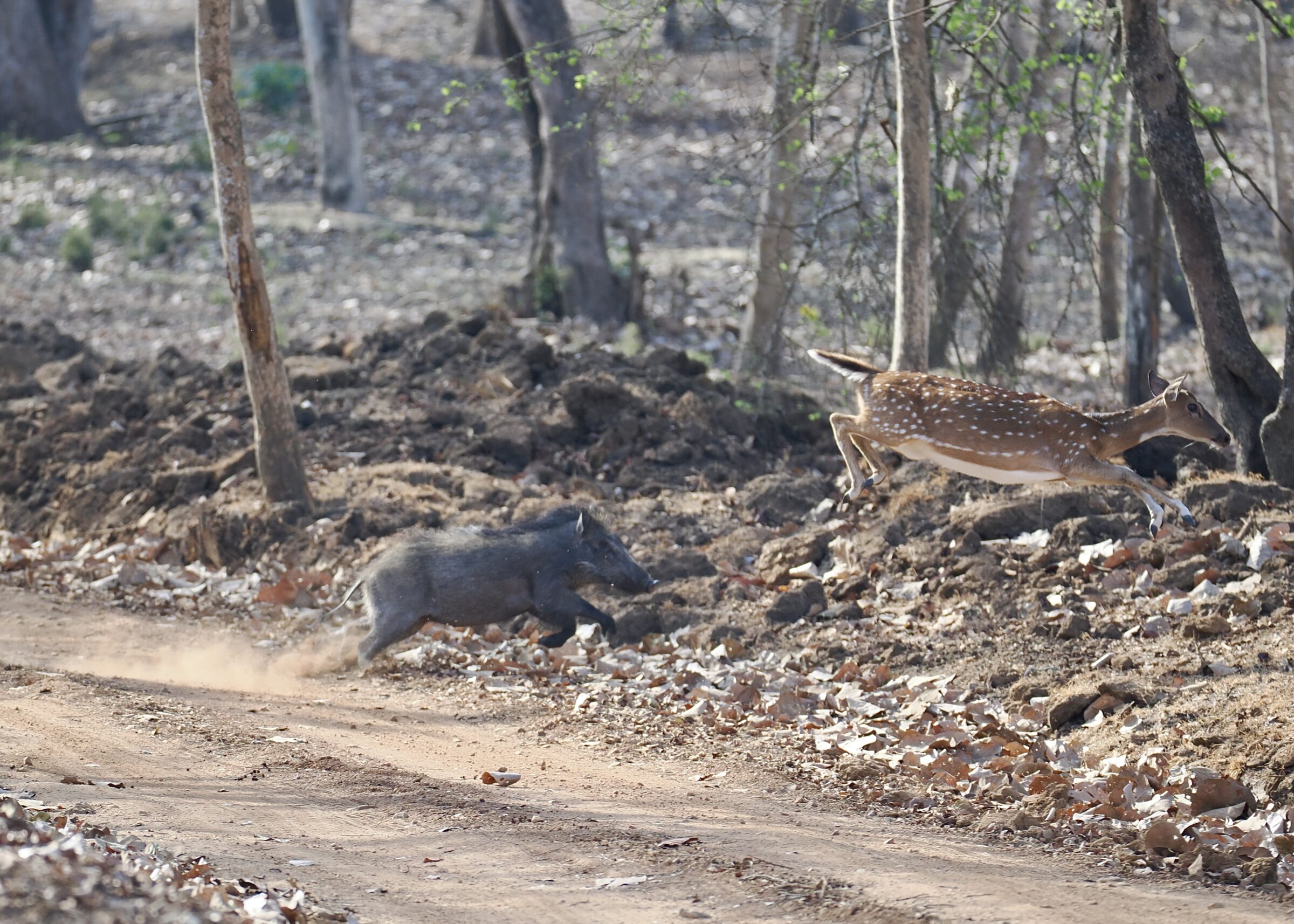
Click here for an enthusiastic essay about “Fabulous Crested Indian Wild Pigs”.
